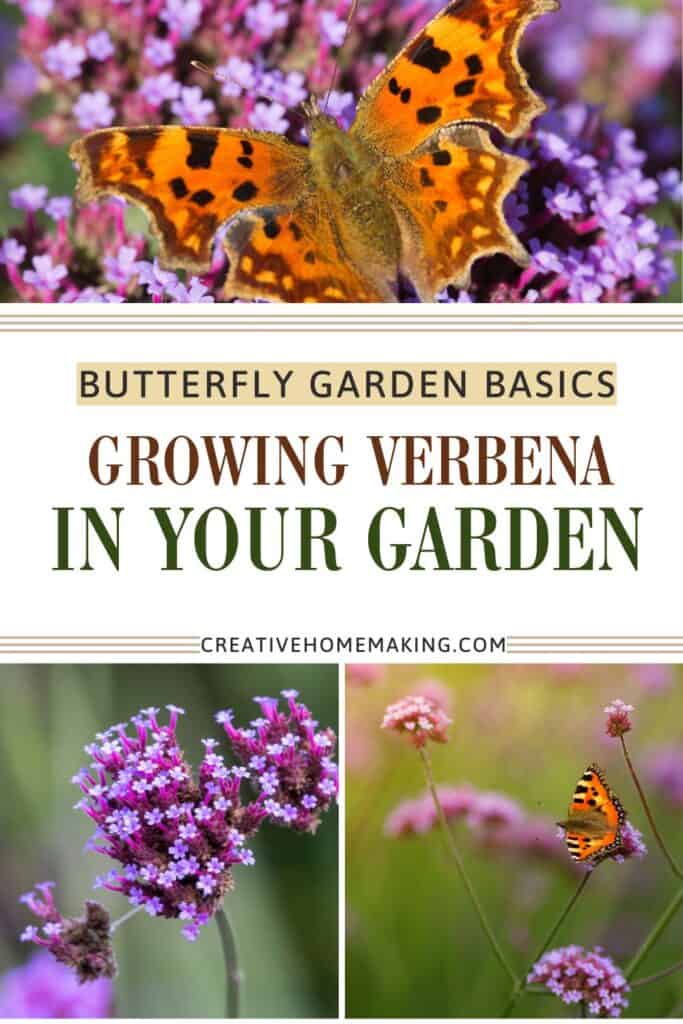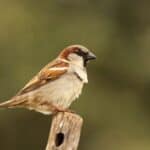If you want to attract butterflies to your garden, growing verbena is a great choice. Verbena plants are easy to grow, need full sun, and their colorful flowers attract lots of butterflies. They work well in garden beds or containers, making them a flexible option no matter your space.
This post may contain affiliate links.
Verbena also stands up well to heat and doesn’t need much water, so it’s low-maintenance while still providing beauty all season. You’ll find that planting several together creates a lovely spot full of fluttering butterflies. With a few simple tips, you can make your butterfly garden a peaceful, colorful place for nature to visit.
Related Article: Why Creeping Phlox is the Perfect Plant for Butterfly Gardens

Choosing And Planting Verbena For Butterfly Gardens
To grow verbena that attracts butterflies, you need to pick the right types, prepare your soil correctly, use good planting methods, and choose the best time to plant. These steps will help your verbena thrive and bring more pollinators to your garden.
Related Article: Why Every Butterfly Garden Needs Milkweed
Selecting The Best Verbena Varieties
Choose verbena varieties that butterflies love. Verbena bonariensis is a popular choice because it grows tall (up to 6 feet) and has airy purple flowers that attract monarchs and other butterflies. For shorter spaces, try low-growing types like Verbena canadensis.
Related Article: Top 11 Butterfly-Friendly Plants for Your Garden
Pick varieties that match your climate. Most verbena types do well in USDA zones 7-11. Consider if you want perennials that come back every year or annuals you replant each season.
Also, think about flower color and bloom time. Verbena offers purple, pink, red, and white flowers. Choosing different colors can make your garden more lively and appealing to a variety of butterflies.
Related Article: How to Grow Joe Pye Weed to Attract Butterflies
Site Preparation And Soil Requirements
Verbena grows best in full sun, so pick a spot that gets 6 to 8 hours of sunlight daily. This helps the plants produce bright flowers that attract butterflies.
Prepare your soil by loosening it and mixing in compost to improve drainage and fertility. Verbena prefers well-drained, slightly sandy soil but will adapt to average garden soil.
Avoid heavy clay or waterlogged areas, as verbena does not like “wet feet.” You can add mulch around the plants to help retain moisture and reduce weeds but keep mulch away from the stems to prevent rot.
Related Article: How to Grow Black-Eyed Susans for a Butterfly-Friendly Garden
Planting Techniques For Healthy Growth
Plant verbena seedlings or seeds about 12 to 18 inches apart. This gives them room to spread and keeps air flowing, which reduces disease.
If you grow verbena in containers, use a mix designed for good drainage. Water plants well after planting, but avoid overwatering to prevent root rot.
Pinch back the stems early in the season to encourage bushier growth and more blooms. Deadhead spent flowers regularly to keep your plants blooming longer.
Related Article: Guide to Growing Asters: Bring More Butterflies to Your Yard
Timing And Seasonal Considerations
Plant verbena after the last frost date when the soil has warmed. This timing helps your plants establish roots and grow strong.
In warmer climates, you can plant verbena in early spring or fall. For cooler areas, treat verbena as an annual, planting in spring and removing it in fall.
Regular watering is important during dry spells, especially while plants get established. Once grown, verbena is fairly drought tolerant but still performs best with moderate water.
By planting verbena at the right time, you give your butterfly garden the best chance to flourish.
Related Article: Bee Balm 101: The Pollinator Plant Every Garden Needs
Maintaining Vibrant Verbena For Butterflies
To keep your verbena healthy and full of color, you’ll want to focus on careful watering, regular pruning, and using the right companion plants. These steps help your flowers bloom longer and attract more butterflies.
Watering And Fertilization Tips
Verbena plants like soil that drains well and does not stay soggy. Water your verbena deeply once or twice a week, depending on the weather. In hot, dry periods, you may need to water more often.
Use a balanced fertilizer every 4 to 6 weeks during the growing season. Choose one with equal parts nitrogen, phosphorus, and potassium, such as a 10-10-10 mix. Avoid over-fertilizing because too much nitrogen can reduce blooms.
Mulching around the base of your plants helps keep moisture in and prevents weeds. Just be sure to keep mulch away from the stem to avoid rot.
Pruning For More Blooms
Pruning is key to encouraging continuous flowering. After the first bloom, cut back the plant by about a third. This helps the plant focus energy on producing new flowers instead of seeds.
Deadhead spent blooms regularly by pinching or snipping off faded flowers. This will keep your verbena looking fresh and blooming longer.
At the end of the growing season, cut the plant back to about 4-6 inches to prepare it for the next growth cycle. This also helps keep the plant tidy.
Attracting Pollinators With Companion Plants
Planting companion flowers nearby can boost butterfly visits. Good options include milkweed, coneflowers, and lantana. These provide extra nectar sources and create a welcoming environment.
Avoid using pesticides, which can harm pollinators. Instead, use natural methods like hand-picking pests or introducing beneficial insects.
Place your verbena where it gets plenty of sunlight. Butterflies prefer sunny spots to rest and feed, so a bright location will attract more visitors.
Follow my Butterfly Garden board on Pinterest.




